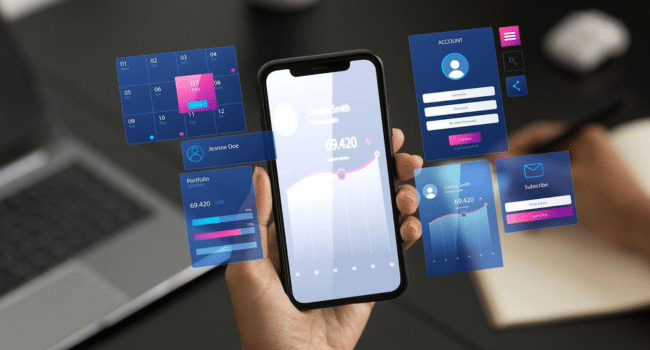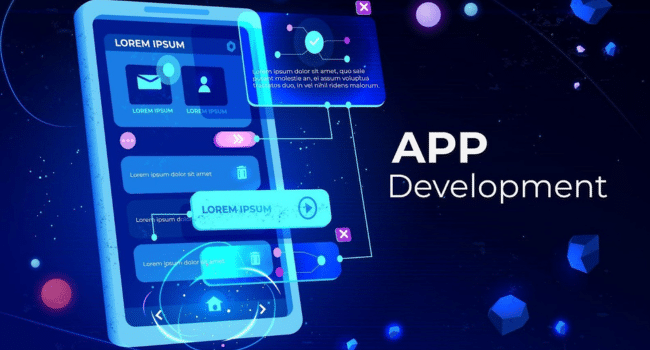Table of Contents
When mobile users open an app, they expect it to work right away. They do not care if they are sitting in an airport with poor Wi Fi or walking through a remote village with zero mobile signal. They want their data, their features, and their experience to stay uninterrupted. And that is exactly why developers have started treating offline first architecture as more than just a technical concept. It has become a critical design strategy, especially when building mobile apps for regions where network stability is unreliable.
Offline first does not mean offline only, in fact, it means the app is designed in such a way that it keeps working when the internet disappears. Then, when the connection returns, everything syncs back seamlessly. The user does not need to retry or restart. This approach might look like a backend decision at first, but in reality, it touches every part of your mobile stack, from storage and sync to UI feedback and error handling.
Let us understand more about the power of offline first mobile applications:
Why Offline First Architecture Matters in Low Connectivity Regions
If you have ever tried booking a cab from a parking basement or opening a health app in a rural village where mobile signal comes and goes, then you have seen what happens when apps are designed only for strong, always on networks. They freeze and show blank screens. They further crash or ask users to retry over and over again. This is not just bad UX, in fact, it pushes users to uninstall the app and never return.
In low connectivity regions, internet drops are not rare exceptions. They are a regular part of daily app usage. This means developers cannot keep treating offline support as an afterthought. Instead, they must treat offline access, data persistence, and sync stability as first class features of the mobile experience.
Here are technical strategies and real world decisions that actually help when building apps that need to function smoothly in environments where internet access is unpredictable.
Design Principles for Offline First Mobile Apps

Before writing code or choosing libraries, developers need to understand what offline first really means in practice. It is not just about storing some data locally. It is about designing every layer of the mobile application to tolerate disconnections without breaking user flow.
-
Local First Data Access
When users open the app, they should see meaningful data that already exists on their device. Even if the last sync was days ago, the app must show cached content, local records, or saved versions. For this to work, local databases like Room (Android), Core Data (iOS), or cross platform solutions like SQLite or Realm should be the primary data source, not remote APIs.
-
Async Sync Architecture
Data sync should happen silently and intelligently in the background. When the app gets reconnected to the internet, it should upload any offline changes and fetch the latest updates without user intervention. This means you need a well planned sync engine that tracks state, retries failed syncs, resolves conflicts, and provides logs when things go wrong.
-
Conflict Resolution
Offline users often modify data that may already be modified by someone else online. When both versions meet again during sync, you need to resolve conflicts. Whether you use last write wins, versioning, or manual user prompts depends on the data model. But ignoring this step leads to data loss or confusing user states.
Choosing the Right Local Storage Layer
Your offline first strategy is only as strong as your local storage engine. Not all storage systems are built for offline caching, sync queuing, or partial updates.
-
SQLite
This is one of the most widely used options, especially in Android apps. It is file based, reliable, and can store structured data well. But it needs a wrapper or ORM like Room or ActiveAndroid to make integration developer friendly.
-
Realm
Realm provides a more developer friendly interface with built in support for relationships and reactive queries. It is fast and well suited for real time updates, but the learning curve for advanced sync can be higher.
-
Core Data (iOS)
Apple’s own persistence framework is powerful but comes with more boilerplate. It works well when you need complex object graphs, and Apple provides strong support for iCloud syncing as well.
For apps with a large offline user base, the choice of database should be influenced by how well it supports lazy loading, transaction logs, schema migrations, and bulk inserts without performance bottlenecks.
Handling Offline Requests and Background Sync
When the user taps “save” or submits a form while offline, the app must record this intent and queue the request. Once a connection becomes available, the app must process the queue in the correct order and post the data back to the server.
This requires:
- A local job queue
- Request serialization
- Retry policies
- Conflict checks
- A clear record of what was synced and what failed
You cannot trust every mobile connection to be stable long enough to push large requests. That is why chunked syncs, delta updates, and resume support are important.
Optimizing User Interface for Offline Context
Users can forgive slow syncs or minor lags, but they will not forgive an app that gives no feedback when things fail. Offline first apps must provide context aware UI feedback.
-
Graceful Degradation
Do not just show a spinner forever. Let the user know they are offline. Show cached content with a banner that says “You are viewing saved data” or “Changes will sync when online.”
-
Input Locking or Queuing
If a form submission depends on network validation, you need to queue the submission or cache it locally. Do not disable the UI completely unless the action has no offline fallback.
-
Sync Status and History
Apps that deal with business workflows should show sync status clearly. Let users see which records are saved, which are pending, and which failed. This is especially critical in logistics, field service, and sales force apps.
Real World Use Cases That Require Offline First Design
-
Healthcare
Mobile apps used in rural clinics need to collect patient data, prescriptions, and case history offline. Nurses and doctors may not have consistent internet access during their rounds. Offline first logic ensures that critical records are never lost and that data syncs later to the central system when the device reconnects.
-
Field Sales and Logistics
Sales agents who take orders from shops or delivery staff updating package status often work in areas with poor coverage. Their actions like updating inventory or capturing signatures must be saved offline and synced reliably later.
-
Education
Learning apps in remote schools cannot depend on real time content delivery. Students need to download lessons when connected and continue learning even when the internet is gone. Offline quizzes, progress tracking, and local certificates are part of the offline first stack.
Key Technologies That Support Offline First Development
Here are the prominent technologies that can help you in adopting and building offline first development:
-
Service Workers
For web-based PWAs, service workers help cache content, intercept requests, and provide offline capabilities. They are useful when building hybrid or browser based mobile apps.
-
Work Manager (Android) and Background Tasks (iOS)
These tools help run deferred tasks like sync jobs even when the app is not active. Developers can use these frameworks to schedule retries and background uploads once the device has connectivity.
-
Firebase and Couchbase Mobile
Firebase provides offline support for Firestore with automatic sync and conflict resolution. Couchbase Lite also supports full offline databases with replication.
GraphQL with Apollo
Apollo Client has built in caching and offline queueing. For apps that fetch complex nested data, GraphQL clients can cache queries, mutations, and retry them on reconnect.
Testing for Real Offline Conditions
It is not enough to turn off Wi Fi and say the app is offline ready. Real conditions include:
- Fluctuating mobile signals
- Slow 2G or congested 3G
- Background app kills
- Device level storage limits
- Network timeouts and partial disconnections
Simulate these during QA using tools like Charles Proxy or network throttling in emulators. Further, test sync collisions using two users editing the same record offline and syncing later.
Final Thoughts: Build for Reality, Not Perfection
Offline first development is not about perfect architecture or zero error sync. It is about giving users a consistent, reliable experience in the real world where networks break, signals drop, and life goes on.
The cost of ignoring offline needs is high. Every crash, lost record, or broken screen pushes users away. On the other hand, every time your app just works even when offline, it earns trust.
If you are building for users who live beyond strong networks, then you are building for the real world. And offline first is not just a feature, it is a foundation to retain and attain users. Thus, the bottom line is that you must work with a mobile app development company that makes offline-first architecture your competitive advantage in low-connectivity regions.
